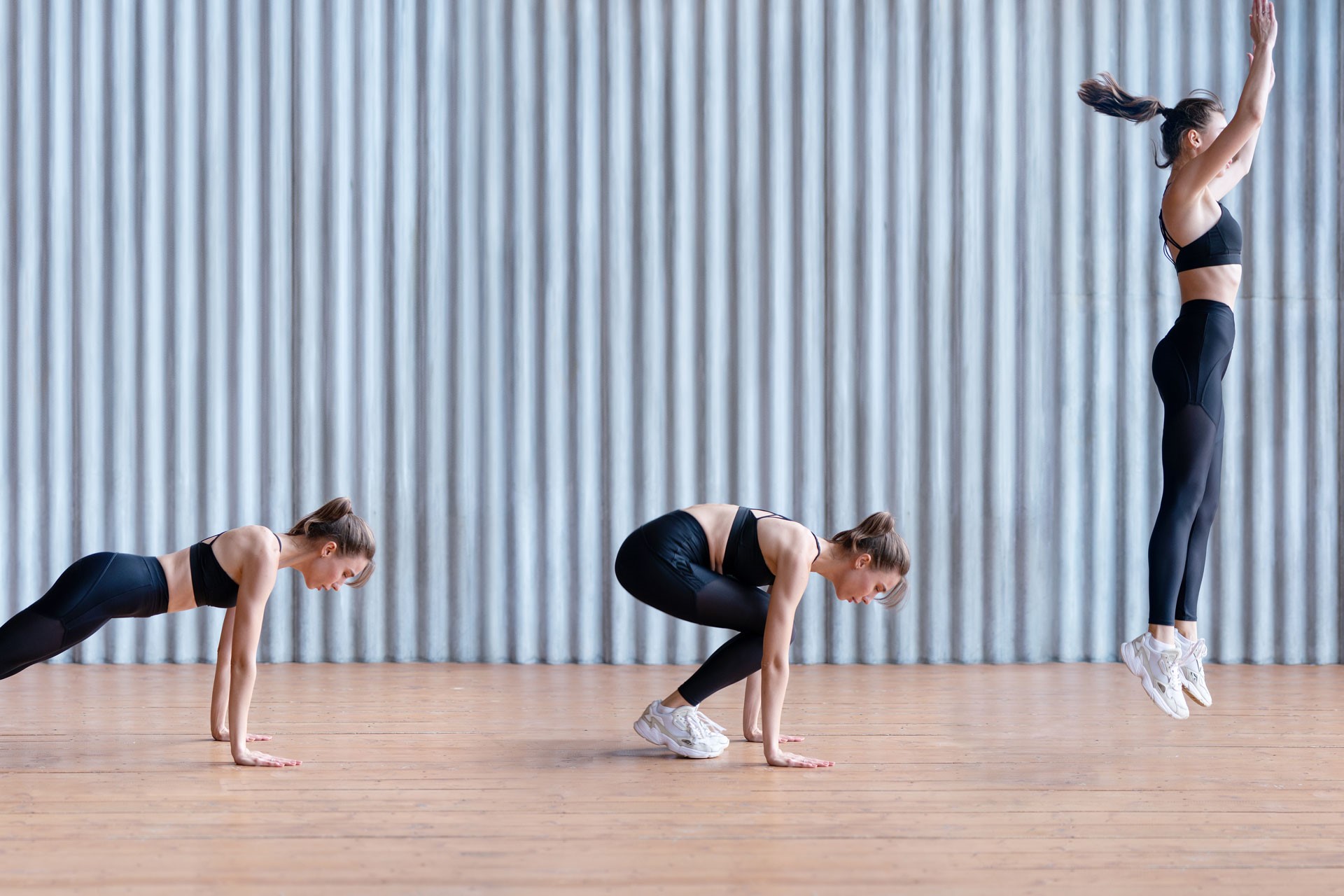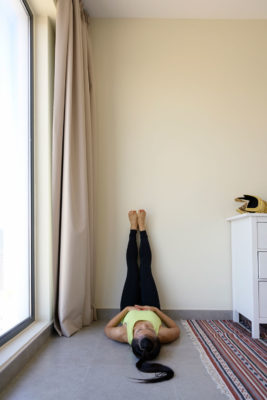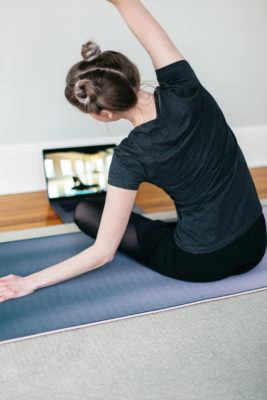Are Burpees Actually Good For You?
By
6 months ago
The notoriously tough exercise offers many benefits, if your form is correct

For the majority of us, a fitness instructor uttering the word ‘burpee’ in a workout class evokes feelings of utter dread. The exercise – which involves a push up followed by a leap in the air – is notoriously challenging, and just a few will leave you gasping for breath. Yet (we are sorry to say), there’s plenty of evidence highlighting the burpee as the ultimate cardio-strength hybrid exercise, provided it’s performed correctly.
What Are Burpees?
A burpee is a high-intensity, full-body exercise which can be performed anywhere, using just your bodyweight. It combines multiple exercises into one movement: plank, push-up and jump squat.
What Are The Benefits Of Burpees?
Hard though they are, burpees offer a whole host of health benefits. They will elevate your heart rate quickly, therefore offering cardiovascular benefits, while also incorporating resistance training, strengthening the muscles in your legs, arms, chest, core, glutes and arms – so pretty much everything.
One study published in the Journal of Strength and Conditioning Research compared the benefits of sprint interval cycling to burpees, concluding that the latter elicits a ‘vigorous cardiorespiratory response… and may confer physiological adaptations and performance improvements similar to those reported for [sprinting].’
They can be used as part of high-intensity interval training (HIIT) which is associated with a number of benefits including boosted post-exercise metabolism and increased VO2 Max, which is the maximum amount of oxygen your body is able to use during exercise.
Plus, burpees require seamless transitions between exercises, meaning they are also beneficial for coordination and agility.

Getty Images
How To Perform A Burpee Correctly
So the benefits are clearly there, but because burpees are a challenging exercise, they’re often performed wrong. So what is the correct form for the exercise?
- Begin standing with your feet shoulder-width apart, with your weight in your heels.
- Send your hips back as you bend your knees into a squat.
- Place your hands on the floor just in front of your feet.
- Jump your feet back softly, landing on the balls of your feet in a plank position.
- Lower your chest to the floor, ensuring you’re engaging the core (think about zipping the belly button towards the spine) and not letting your hips drop.
- Reverse the movement by pushing the body upwards and returning to the plank position.
- Jump your feet towards your hands, then stand up and come into a jump, reaching your hands overhead.
Common Mistakes To Avoid
- Not warming up.
- Jumping too high.
- Placing your hands too far in front of you.
- Using only your arms – engage your core, legs and hips as much as possible.
- Going too fast – start slow, and gradually increase the intensity.
- Letting your lower back arch in the plank – tighten your abs to avoid this.
Burpee Variations
This exercise can be modified or progressed to make it easier or harder. For the former, you can take out the push-up or the jump. And if you want it even tougher, add dumbbells to transform the movement into a devil’s press (don’t go too heavy here).









